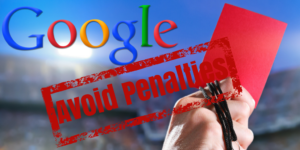
Why ROI has no place in marketing
 Ben Hirons, an Entrepreneurs’ Organization (EO) member in Brisbane, is the founder and CEO of Due North, a digital marketing agency that engineers strategic, growth-focused systems and products. After his recent blog post addressing why it’s in your best interest to ignore SEO, we asked Ben about the importance of return on investment when it comes to marketing. Here’s what he shared:
Ben Hirons, an Entrepreneurs’ Organization (EO) member in Brisbane, is the founder and CEO of Due North, a digital marketing agency that engineers strategic, growth-focused systems and products. After his recent blog post addressing why it’s in your best interest to ignore SEO, we asked Ben about the importance of return on investment when it comes to marketing. Here’s what he shared:
I was recently chatting to a good friend who runs a successful plumbing business. He was about to start work with a digital marketing agency.
I asked, “Why did you choose that agency?”
He replied, “They promised me 400% return on investment (ROI).”
I said, “And do you think that’s a good outcome?”
His reply: “Yes, of course. Don’t you?”
The math on marketing ROI
To answer my friend’s question, we need to look at the math of an actual―not fictitious―return.
Let’s say you spend $1,000 to make $4,000, correct? This gives you a gain of $3,000 because with any investment, you’re supposed to get the original amount back plus the return, yes? This immediately brings us down to a 300% ROI.
My friend’s business runs at a 50% gross profit, or in other words, it costs him 50% of his revenue to deliver on his promise. So 50% of $4,000 = $2,000, bringing us down to 100% ROI. ($3,000 less $2,000 gives us $1,000).
Then we’ve got staff wages, which run at 20% of revenue, so we’re another $800 down.
He’s also got other fixed costs. To open his doors costs 25% of his revenue. So, for $4,000 in revenue, he has $1,000 in costs. I know what you’re going to say―these are fixed costs, so there are no extra costs associated with delivering his products or services.
But tell that to anyone who has grown a business before. With growth comes the growth of fixed costs, so you need to factor them in at all times; otherwise, as revenue goes up, profit comes down!
So, now, we are negative $800 ROI. Not only have I not made money, but I’ve also lost money on what I thought was a good deal. That is not a good ROI. What started as a 400% ROI is actually 80% ROI.


 Contributed by Jackie Carrillo, a content coordinator and contributor who writes on technology, marketing, business management and education.
Contributed by Jackie Carrillo, a content coordinator and contributor who writes on technology, marketing, business management and education. 
 Written for EO by Nico Prins, a communications consultant who specializes in internet marketing.
Written for EO by Nico Prins, a communications consultant who specializes in internet marketing.  Written for EO by Linda Anderson.
Written for EO by Linda Anderson.
 Online content is a key ingredient of every marketing strategy. And one of the most popular and effective ways to establish a positive online presence is a blog.
Online content is a key ingredient of every marketing strategy. And one of the most popular and effective ways to establish a positive online presence is a blog. 


 Google can make your business go from invincible to invisible. Learn the rules so you can stay online and easy to find.
Google can make your business go from invincible to invisible. Learn the rules so you can stay online and easy to find. 
